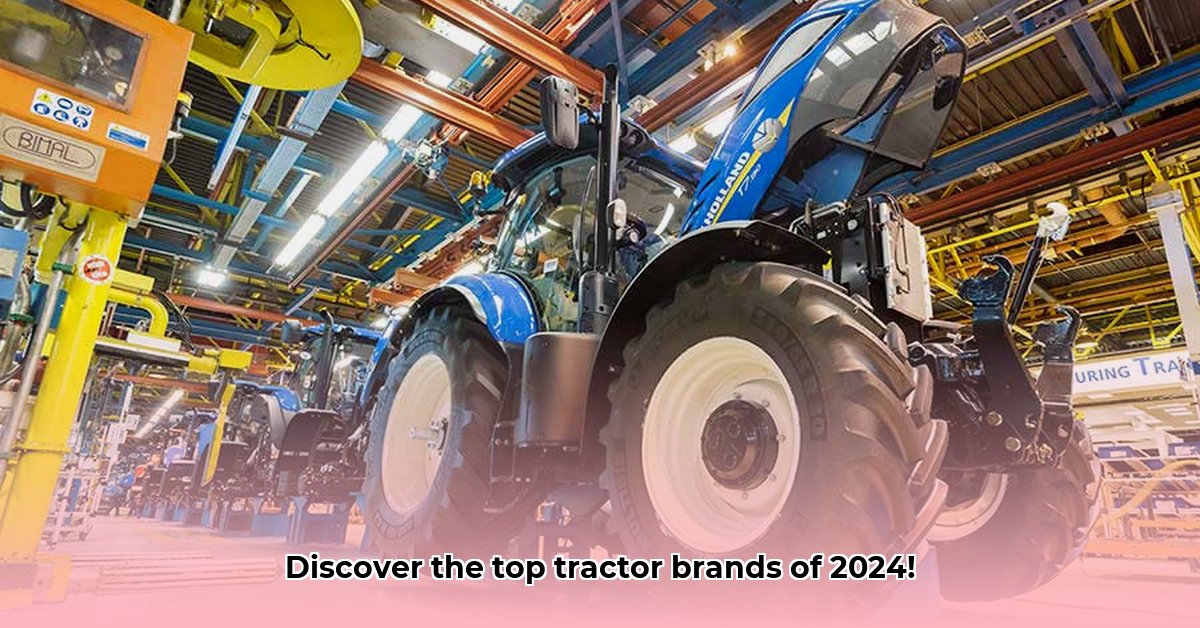
Tractor Manufacturers: A Competitive Landscape
The global tractor market, a cornerstone of modern agriculture, is experiencing dynamic shifts driven by technological innovation, regional variations, and evolving sustainability concerns. This report analyzes the key players, emerging trends, and future outlook for this vital sector. Understanding the competitive landscape is crucial for investors, policymakers, and industry stakeholders alike. For more information on top brands, see this helpful guide: Top Tractor Brands. What factors will determine the success of tractor manufacturers in the coming years?
Market Leaders and Key Players
Several multinational corporations dominate the global tractor market. John Deere, a long-standing leader, maintains its position through a combination of high-quality products, a robust global distribution network, and significant R&D investment. Their focus extends beyond tractors to offering comprehensive farming solutions incorporating precision agriculture and GPS guidance. This integrated approach strengthens their market leadership.
Mahindra & Mahindra, headquartered in India, demonstrates a distinct strategy. Their focus on cost-effective tractors tailored to developing markets, especially India, has yielded substantial market share. This concentrated approach underscores the importance of understanding regional needs. Their success illustrates the value of strategic market segmentation.
Other key players, including AGCO (Massey Ferguson and Fendt brands), CNH Industrial (Case IH and New Holland), and Kubota (renowned for compact tractors), contribute significantly to the diverse global landscape. Each company maintains a unique product portfolio and geographical focus, reflecting the varied demands of the agricultural sector. How do these manufacturers' strategies compare in terms of innovation and market reach?
Regional Analysis: A Diverse Global Market
The tractor market displays notable regional variations. India, a significant agricultural producer, presents a massive and highly competitive market where domestic manufacturers compete with established global players. The cost-effectiveness of domestically produced tractors is a key competitive factor in this region.
China's role is equally impactful. It functions as both a major producer and consumer, significantly influencing global supply chains and demand patterns. Other regions are also experiencing growth, spurred by government initiatives promoting agricultural modernization and increasing food production needs. What are the specific governmental policies that are driving growth in these regions?
Technological Advancements: Automation and Sustainability
Technological advancements are fundamentally reshaping the tractor manufacturing sector. Automation is becoming increasingly prevalent, with GPS-guided systems, autonomous capabilities, and precision farming technologies improving efficiency and reducing labor costs. Sustainability concerns are also driving innovation, with manufacturers actively developing biofuel-compatible engines and reducing emissions to meet stringent environmental standards. The integration of these technologies is a significant factor driving market evolution. What are the biggest challenges in adopting these new technologies?
Future Outlook: Challenges and Opportunities
The tractor manufacturing industry faces challenges including supply chain disruptions, fluctuating commodity prices, and economic instability, all of which can significantly impact production and profitability. However, emerging markets in Africa and South America present considerable growth opportunities as these regions invest in agricultural development, fostering an increased demand for modern tractors. Manufacturers must adapt quickly to changing market conditions and consumer demands. What strategies should manufacturers adopt to mitigate the risks and capitalize on the opportunities in the future?
Conclusion: Shaping the Future of Agriculture
The tractor manufacturing sector's future hinges on several factors. Adaptability to evolving market dynamics, sustainable practices, and technological advancements will define success. Meeting the ever-increasing demand for food production necessitates innovative solutions. The manufacturers who successfully integrate technological advancements, address sustainability concerns, and navigate global economic shifts will shape the future of agricultural mechanization.
(Note: This analysis is based on available data and insights. Further research may reveal additional nuances.)